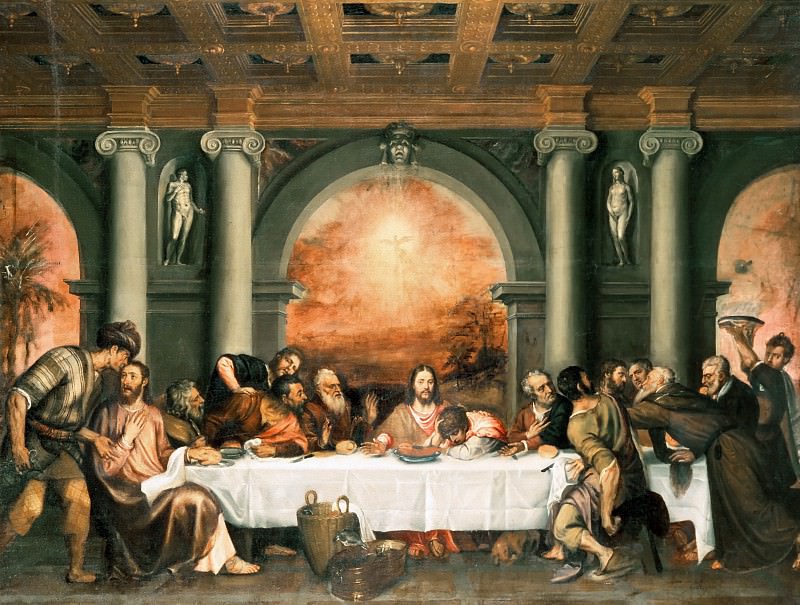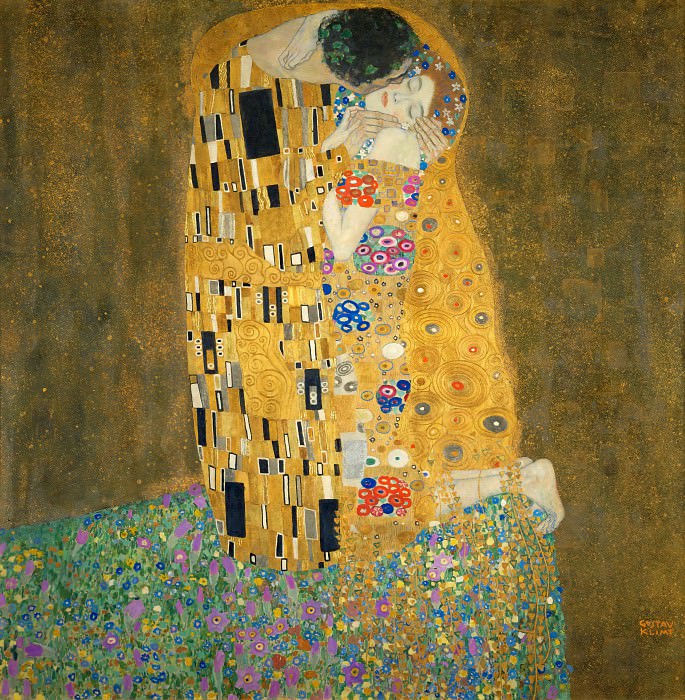Richard Hamilton: Pioneering Pop Art and Beyond
Richard Hamilton (1922-2011) remains one of the most influential figures in modern art. Renowned for his role in the development of Pop Art, Hamilton's work bridged the gap between high culture and the everyday world of consumerism. His innovative approach and distinctive style have left an indelible mark on contemporary art, making him a key figure in art history.
Early Life and Education
Richard Hamilton was born in London in 1922. His early exposure to the arts came from his family background and the cultural environment of post-war Britain. Hamilton's formal art education began at the Newcastle College of Art, where he developed his foundational skills. He later continued his studies at the Royal Academy of Arts, London, where his understanding of art theory and practice was deepened. These formative years were crucial in shaping his artistic vision and technique.
The Emergence of Pop Art
Hamilton's contribution to the Pop Art movement is both profound and groundbreaking. In the early 1950s, he became associated with the London-based Independent Group, which was instrumental in laying the groundwork for Pop Art. This group of artists and critics explored the intersection of popular culture and fine art, challenging traditional boundaries. Hamilton's work from this period reflects his fascination with mass media, consumerism, and the changing nature of art.
One of Hamilton's seminal works, "Just What Is It That Makes Today's Homes So Different, So Appealing?" (1956), epitomizes his innovative approach. This collage, often considered one of the first pieces of Pop Art, is a vibrant commentary on the materialism and consumer culture of the time. By incorporating images from advertisements and popular magazines, Hamilton questioned the nature of art and its role in society.
The Influence of Mass Media
Hamilton's engagement with mass media is a defining feature of his work. His art often incorporates imagery from advertisements, comic strips, and television. This approach not only reflects the omnipresence of media in contemporary life but also critiques its impact on perceptions of beauty, success, and desire. Hamilton's use of media imagery challenges viewers to reconsider their relationship with consumer culture and the way it shapes artistic expression.
Iconic Works and Artistic Evolution
Throughout his career, Hamilton created a diverse body of work that includes paintings, prints, and installations. His approach evolved over time, incorporating new techniques and exploring different themes. In the 1960s, Hamilton's work continued to evolve as he experimented with new materials and methods. He created a series of works that explored the relationship between art and technology, reflecting his interest in how technological advancements influence art production and reception.
One notable example is his series of prints based on the famous artist Marcel Duchamp. Hamilton's reinterpretation of Duchamp's work demonstrates his engagement with art history and his ability to blend traditional techniques with modern sensibilities. This series highlights Hamilton's respect for past masters while also showcasing his unique approach to contemporary issues.
Political and Social Commentary
Hamilton's art is not only a reflection of his personal interests but also a commentary on broader social and political issues. Throughout his career, he engaged with themes such as consumerism, technology, and political power. His works often address the impact of these forces on individual identity and societal values.
For instance, Hamilton's series "The Critic's Choice" (1984) is a critical examination of the role of art criticism and its influence on the art market. This series challenges conventional notions of taste and value, questioning the authority of critics and the commercial aspects of the art world. Hamilton's engagement with these themes reflects his broader concerns about the intersection of art, commerce, and ideology.
Legacy and Impact
Richard Hamilton's influence extends far beyond his own lifetime. His pioneering work in Pop Art paved the way for subsequent generations of artists who have continued to explore the relationship between art and popular culture. Hamilton's innovative use of media imagery, his engagement with social and political issues, and his experimentation with new techniques have all contributed to his lasting impact on the art world.
Hamilton's legacy is also reflected in the continued relevance of his work. His art remains a touchstone for discussions about the role of media, consumerism, and technology in contemporary culture. Museums and galleries around the world continue to exhibit his work, ensuring that new audiences can engage with his contributions to art history.
Conclusion
Richard Hamilton's career represents a remarkable journey through the evolution of modern art. His pioneering role in the Pop Art movement, his innovative use of media imagery, and his engagement with social and political issues have all left an enduring legacy. Hamilton's work continues to inspire and provoke, reflecting the dynamic nature of contemporary art and its relationship with the world around us. His contributions to art not only shaped his own era but also paved the way for future artists, making him a central figure in the history of modern art.
Richard Hamilton (1922-2011) remains one of the most influential figures in modern art. Renowned for his role in the development of Pop Art, Hamilton's work bridged the gap between high culture and the everyday world of consumerism. His innovative approach and distinctive style have left an indelible mark on contemporary art, making him a key figure in art history.
Early Life and Education
Richard Hamilton was born in London in 1922. His early exposure to the arts came from his family background and the cultural environment of post-war Britain. Hamilton's formal art education began at the Newcastle College of Art, where he developed his foundational skills. He later continued his studies at the Royal Academy of Arts, London, where his understanding of art theory and practice was deepened. These formative years were crucial in shaping his artistic vision and technique.
The Emergence of Pop Art
Hamilton's contribution to the Pop Art movement is both profound and groundbreaking. In the early 1950s, he became associated with the London-based Independent Group, which was instrumental in laying the groundwork for Pop Art. This group of artists and critics explored the intersection of popular culture and fine art, challenging traditional boundaries. Hamilton's work from this period reflects his fascination with mass media, consumerism, and the changing nature of art.
One of Hamilton's seminal works, "Just What Is It That Makes Today's Homes So Different, So Appealing?" (1956), epitomizes his innovative approach. This collage, often considered one of the first pieces of Pop Art, is a vibrant commentary on the materialism and consumer culture of the time. By incorporating images from advertisements and popular magazines, Hamilton questioned the nature of art and its role in society.
The Influence of Mass Media
Hamilton's engagement with mass media is a defining feature of his work. His art often incorporates imagery from advertisements, comic strips, and television. This approach not only reflects the omnipresence of media in contemporary life but also critiques its impact on perceptions of beauty, success, and desire. Hamilton's use of media imagery challenges viewers to reconsider their relationship with consumer culture and the way it shapes artistic expression.
Iconic Works and Artistic Evolution
Throughout his career, Hamilton created a diverse body of work that includes paintings, prints, and installations. His approach evolved over time, incorporating new techniques and exploring different themes. In the 1960s, Hamilton's work continued to evolve as he experimented with new materials and methods. He created a series of works that explored the relationship between art and technology, reflecting his interest in how technological advancements influence art production and reception.
One notable example is his series of prints based on the famous artist Marcel Duchamp. Hamilton's reinterpretation of Duchamp's work demonstrates his engagement with art history and his ability to blend traditional techniques with modern sensibilities. This series highlights Hamilton's respect for past masters while also showcasing his unique approach to contemporary issues.
Political and Social Commentary
Hamilton's art is not only a reflection of his personal interests but also a commentary on broader social and political issues. Throughout his career, he engaged with themes such as consumerism, technology, and political power. His works often address the impact of these forces on individual identity and societal values.
For instance, Hamilton's series "The Critic's Choice" (1984) is a critical examination of the role of art criticism and its influence on the art market. This series challenges conventional notions of taste and value, questioning the authority of critics and the commercial aspects of the art world. Hamilton's engagement with these themes reflects his broader concerns about the intersection of art, commerce, and ideology.
Legacy and Impact
Richard Hamilton's influence extends far beyond his own lifetime. His pioneering work in Pop Art paved the way for subsequent generations of artists who have continued to explore the relationship between art and popular culture. Hamilton's innovative use of media imagery, his engagement with social and political issues, and his experimentation with new techniques have all contributed to his lasting impact on the art world.
Hamilton's legacy is also reflected in the continued relevance of his work. His art remains a touchstone for discussions about the role of media, consumerism, and technology in contemporary culture. Museums and galleries around the world continue to exhibit his work, ensuring that new audiences can engage with his contributions to art history.
Conclusion
Richard Hamilton's career represents a remarkable journey through the evolution of modern art. His pioneering role in the Pop Art movement, his innovative use of media imagery, and his engagement with social and political issues have all left an enduring legacy. Hamilton's work continues to inspire and provoke, reflecting the dynamic nature of contemporary art and its relationship with the world around us. His contributions to art not only shaped his own era but also paved the way for future artists, making him a central figure in the history of modern art.















